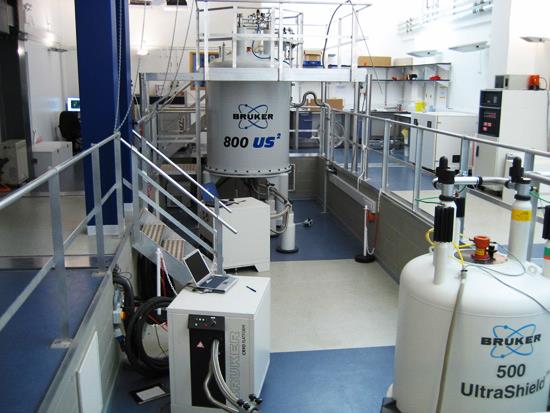Markers Predicting Obesity Can Be Detected In Urine
By LabMedica International staff writers
Posted on 11 May 2015
The prevalence of obesity and being overweight is rising worldwide, and there is a need to understand the relationship of obesity to increased risk of death from heart disease, stroke, diabetes, and cancer.Posted on 11 May 2015
Chemical markers have been identified in urine that are associated with body mass and this discovery may provide new insights into how obesity leads to disease as it is estimated that obesity-driven disease results in 3.4 million deaths per year worldwide.

Image: Proton (1H) nuclear magnetic resonance (NMR) spectroscopy apparatus (Photo courtesy of Imperial College London).
An international team of scientists led by those at Imperial College London (UK) analyzed urine samples from over 2,000 volunteers in the US and UK. Metabolic profiling of urine samples collected over two 24-hour time periods three weeks apart showed reproducible patterns of metabolite excretion associated with adiposity. The team used 24-hour urinary metabolic profiling by proton (1H) nuclear magnetic resonance (NMR) spectroscopy and ion exchange chromatography.
Exploratory analysis of the urinary metabolome using 1H NMR spectroscopy (Bruker; Coventry, UK) of the 1,800 US samples identified 29 molecular species, clustered in interconnecting metabolic pathways that were significantly associated with body mass index (BMI); 25 of these species were also found in the 444 samples in the UK validation cohort.
The investigators found multiple associations between urinary metabolites and BMI including urinary glycoproteins and N-acetyl neuraminate (related to renal function), trimethylamine, dimethylamine, 4-cresyl sulfate, phenylacetylglutamine and 2-hydroxyisobutyrate (gut microbial co-metabolites), succinate and citrate (tricarboxylic acid cycle intermediates), ketoleucine and the ketoleucine/leucine ratio (linked to skeletal muscle mitochondria) and branched-chain amino acid metabolism), ethanolamine (skeletal muscle turnover), and 3-methylhistidine (skeletal muscle turnover and meat intake).
Jeremy K. Nicholson, PhD, a professor and senior author of the study, said, “Obesity has become a huge problem all over the world, threatening to overwhelm health services and drive life expectancy gains into reverse. Tackling it is an urgent priority and it requires us to have a much better understanding of how body fat and other aspects of biology are related. These findings provide possible starting points for new approaches to preventing and treating obesity and its associated diseases.” The study was published on April 29, 2015, in the journal Science Translational Medicine.
Related Links:
Imperial College London
Bruker












.jpg)
